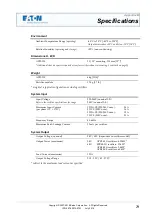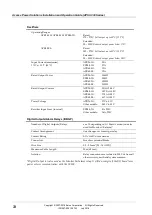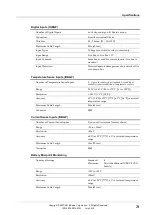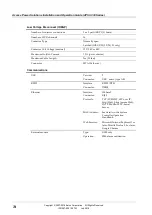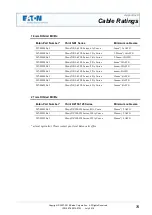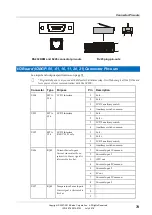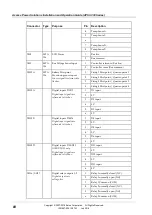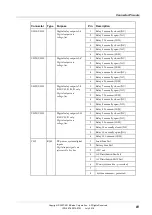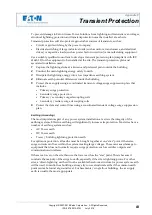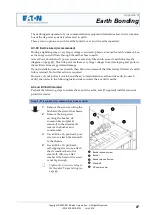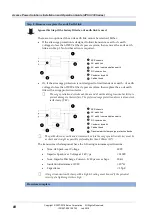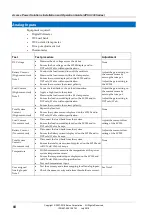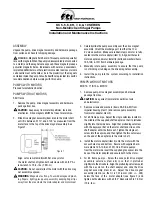
Appendix F
Transient Protection
Copyright © 2007-2018 Eaton Corporation. All Rights Reserved.
IPN 997-00012-07A1 July 2018
83
A
p
p
e
n
d
i
x
F
Transi ent Prot ecti on
To prevent damage to Eaton Access Power Solutions from lightning and transient over-voltages,
structural lightning protection and transient protection must be installed at each site.
Transient protection will also protect against other sources of transients, such as:
•
Circuit or grid switching by the power company
•
Electrical switching of large inductive loads (such as motors, transformers, and electrical
drives) or capacitive loads (such as power factor correction) or manufacturing equipment.
Use a suitably qualified consultant to develop a transient protection plan (compliant with IEC
61643-12) for the equipment to be installed at the site. The transient protection plan and
associated installation must:
1
Capture the lightning strike at a known and preferred point outside the building
2
Conduct the main lightning energy safely to earth
3
Dissipate the lightning energy into a low impedance earthing system
4
Eliminate earth potential differences inside the building
5
Protect the ac supply using a coordinated transient voltage surge suppression plan, that
includes:
•
Primary surge protection
•
Secondary surge protection
•
Primary / secondary surge decoupling coils
•
Secondary / tertiary surge decoupling coils
6
Protect the data and control lines using a coordinated transient voltage surge suppression
plan
Earthing (Grounding)
The most important aspect of any power system installation at a site is the integrity of the
earthing systems. Effective earthing will significantly increase site protection. Most sites have a
number of earthing systems such as:
•
AC Power earth
•
DC Power earth
•
Tower / building lightning protection earth
For optimum protection, all earths must be brought together at one "star" point. Otherwise,
surge currents can flow within the system creating large voltages. These can cause damage to
equipment that does not normally require surge protection, such as rectifier outputs and
communications interfaces.
If there is a tower on the site then use the tower earth as the "star" point. This is because it
conducts the majority of the surge to earth, especially if the site is lightning-prone. For other
sites, a 'direct-lightning' earth will not be available therefore a structural or power system earth
will be used. In multi-floor buildings, always try to use structural earths if the common earth
point cannot be found at ground level. For basements / single floor buildings, the ac supply
earth is usually the most appropriate.



